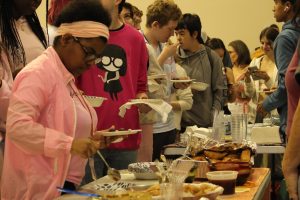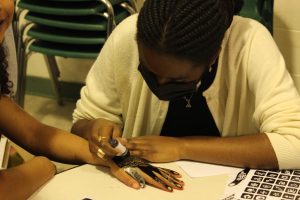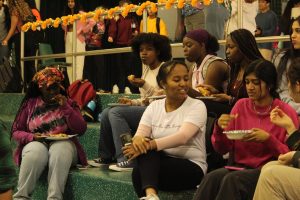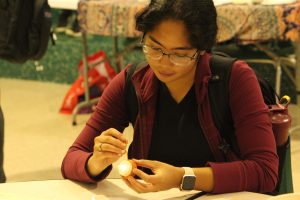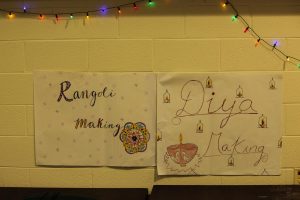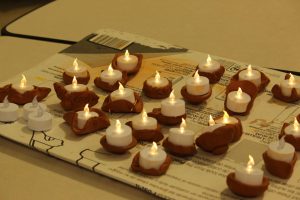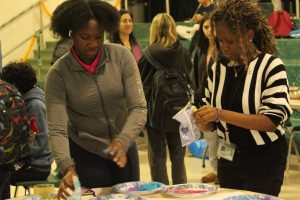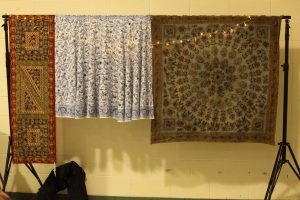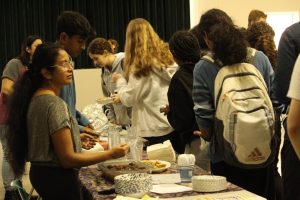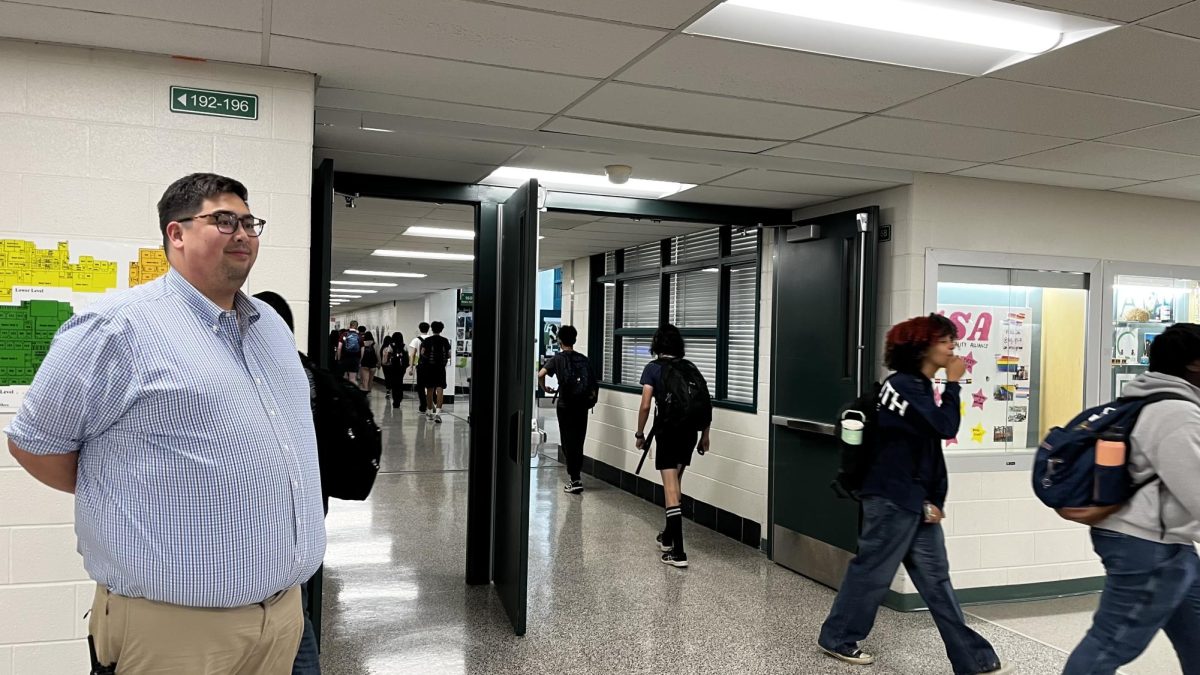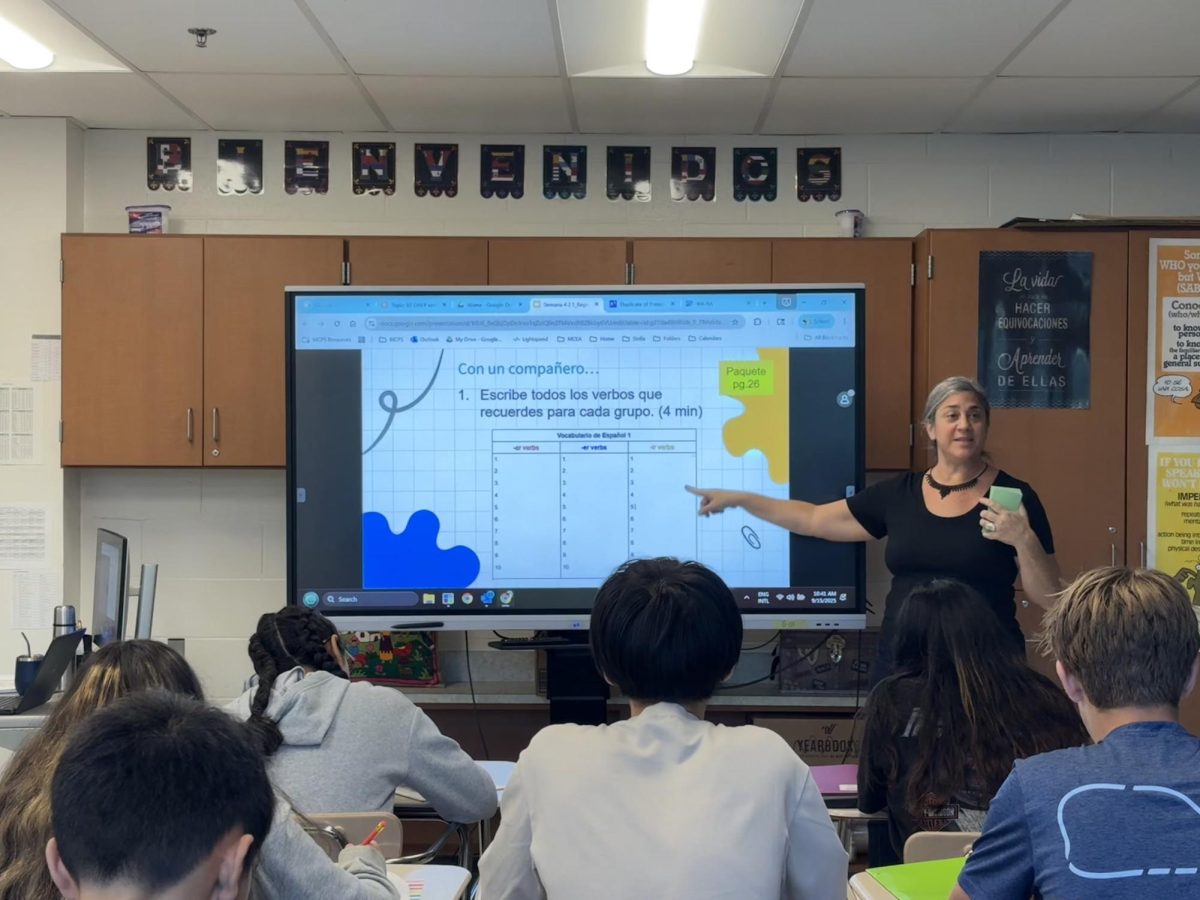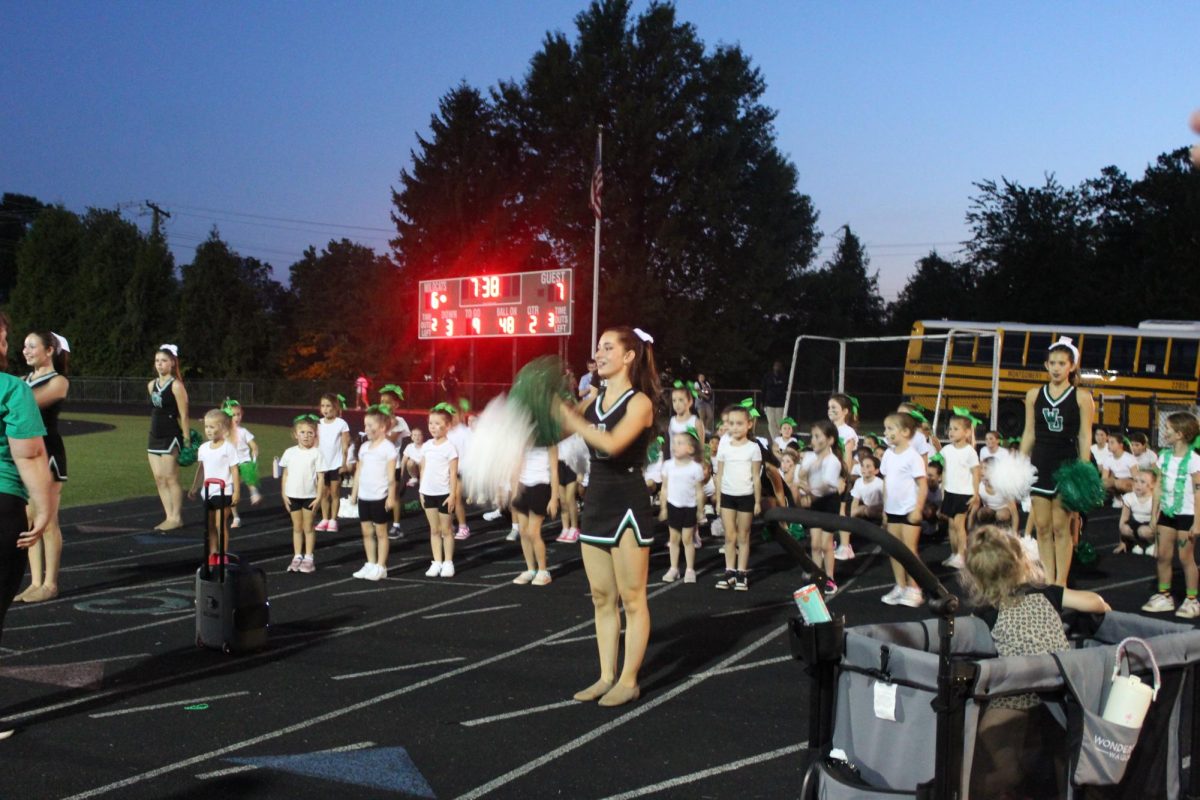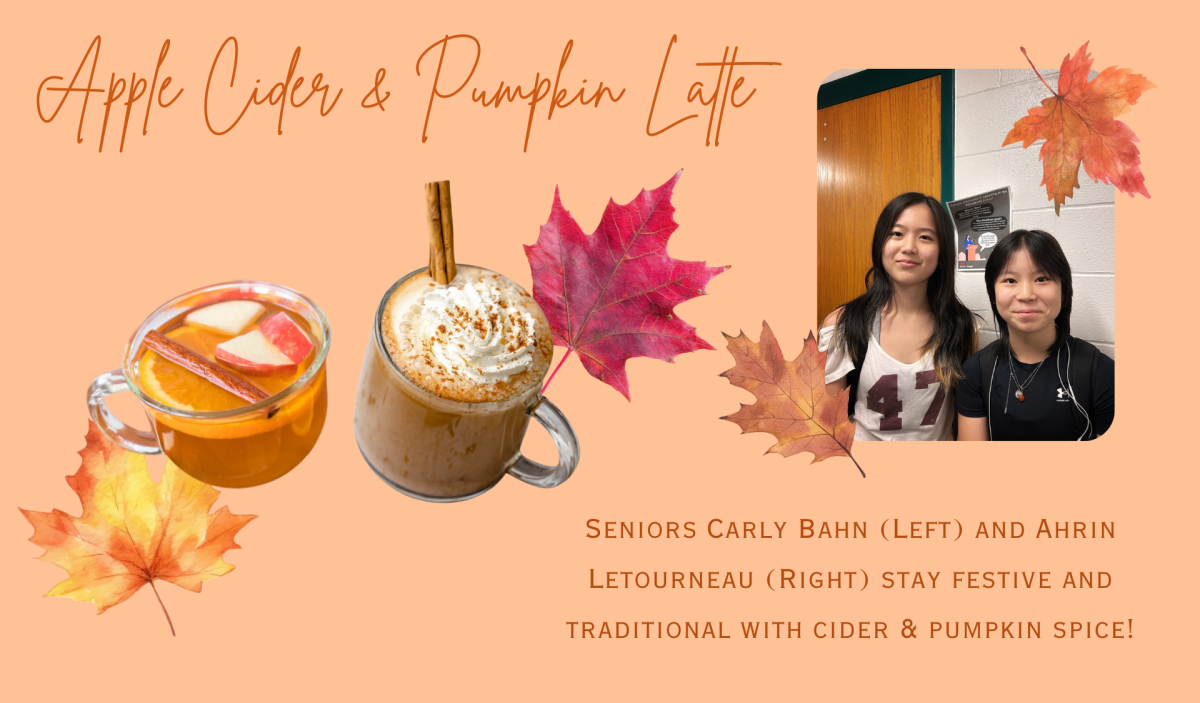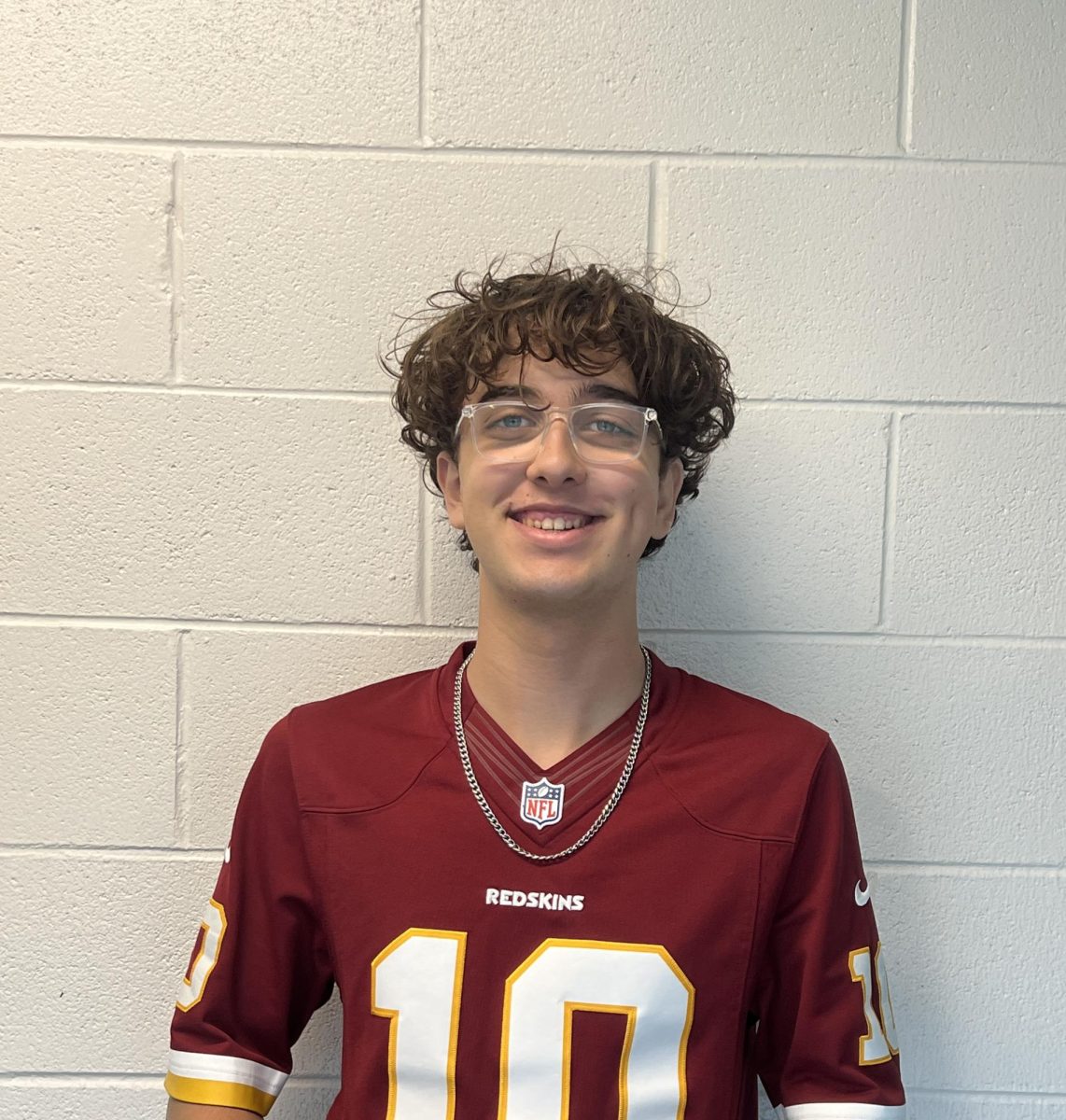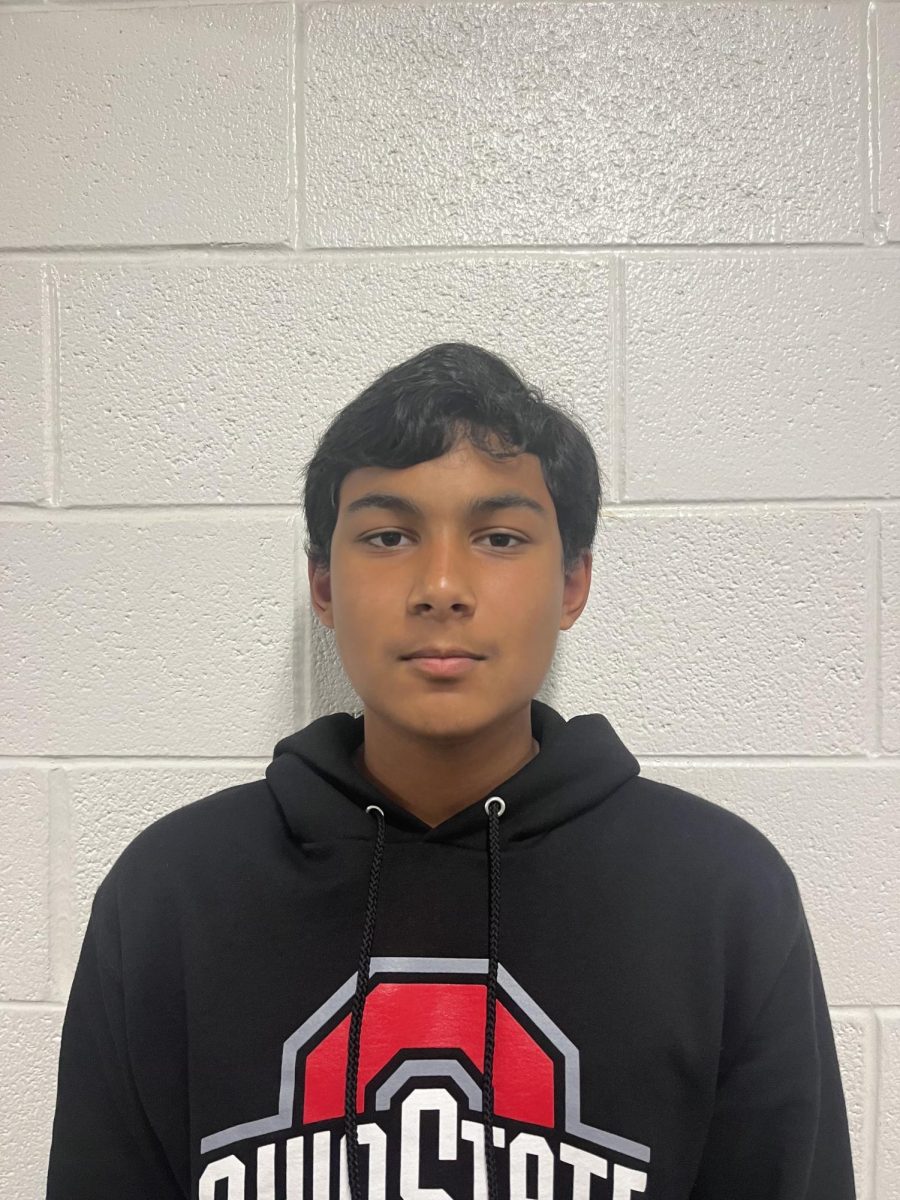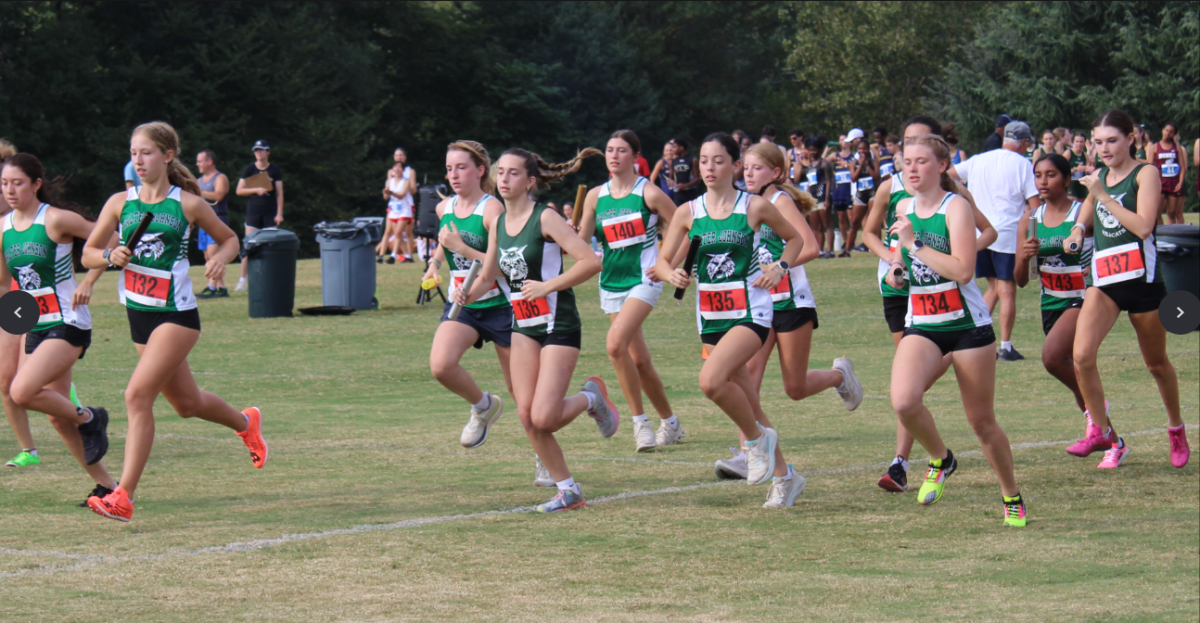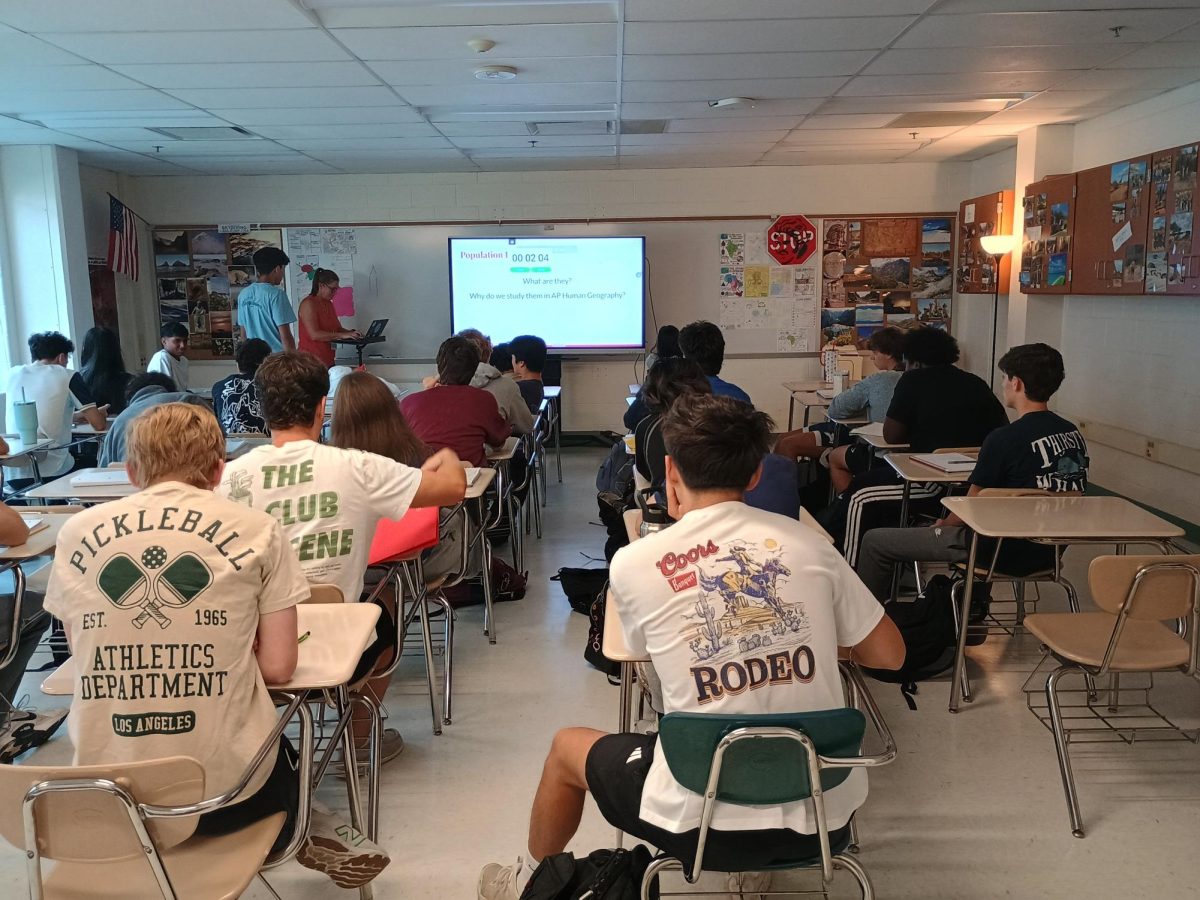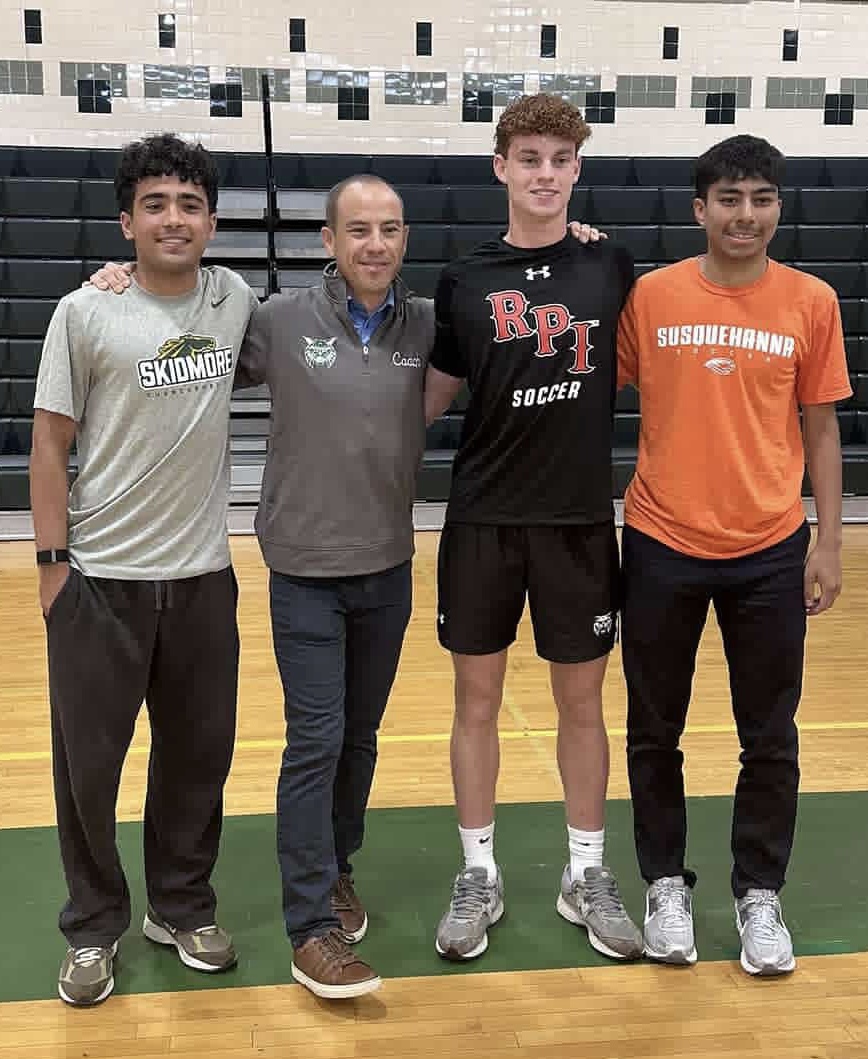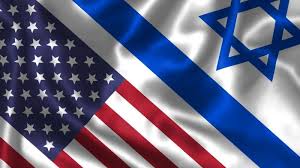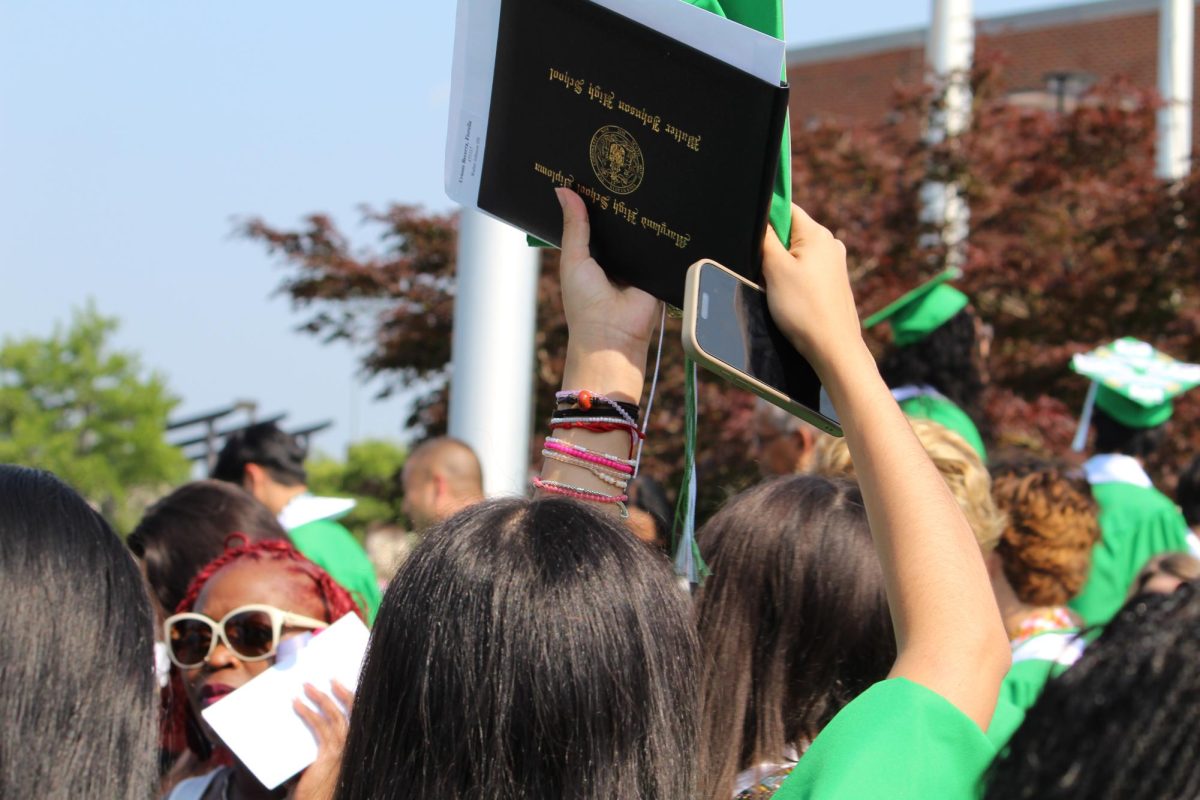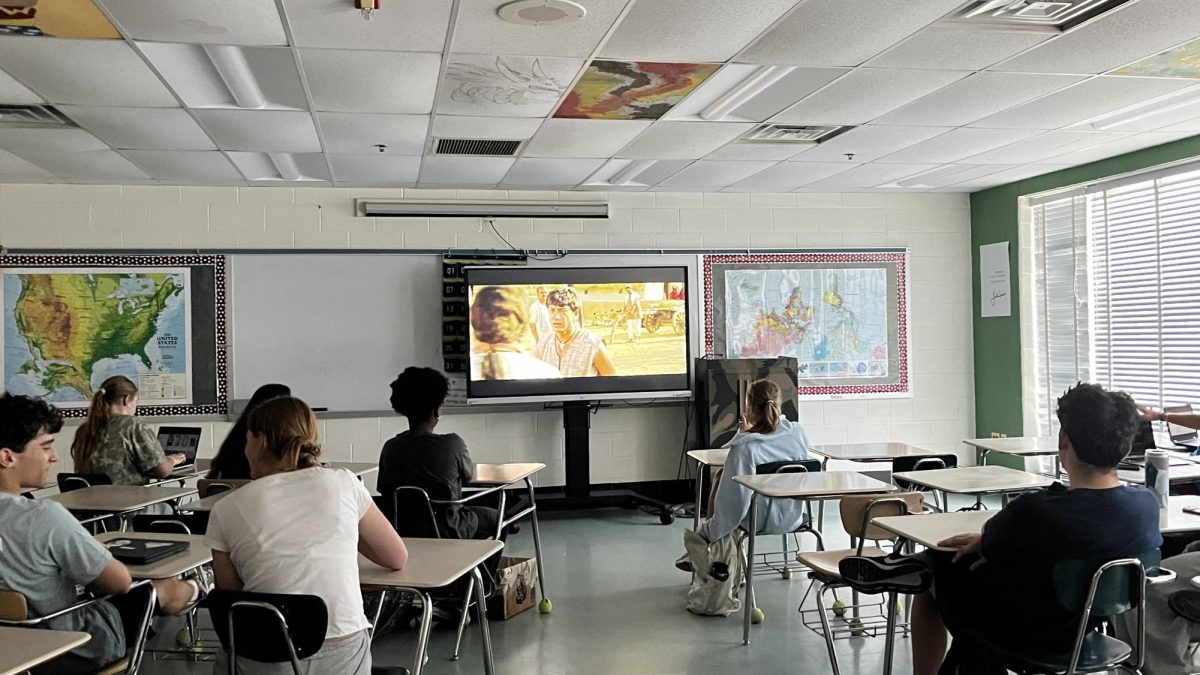-
Some of the food offered were samosas (savory fried triangular prisms), gulab jamuns (small spheres with sugar syrup) and kaju katli (diamond-shaped sweets).
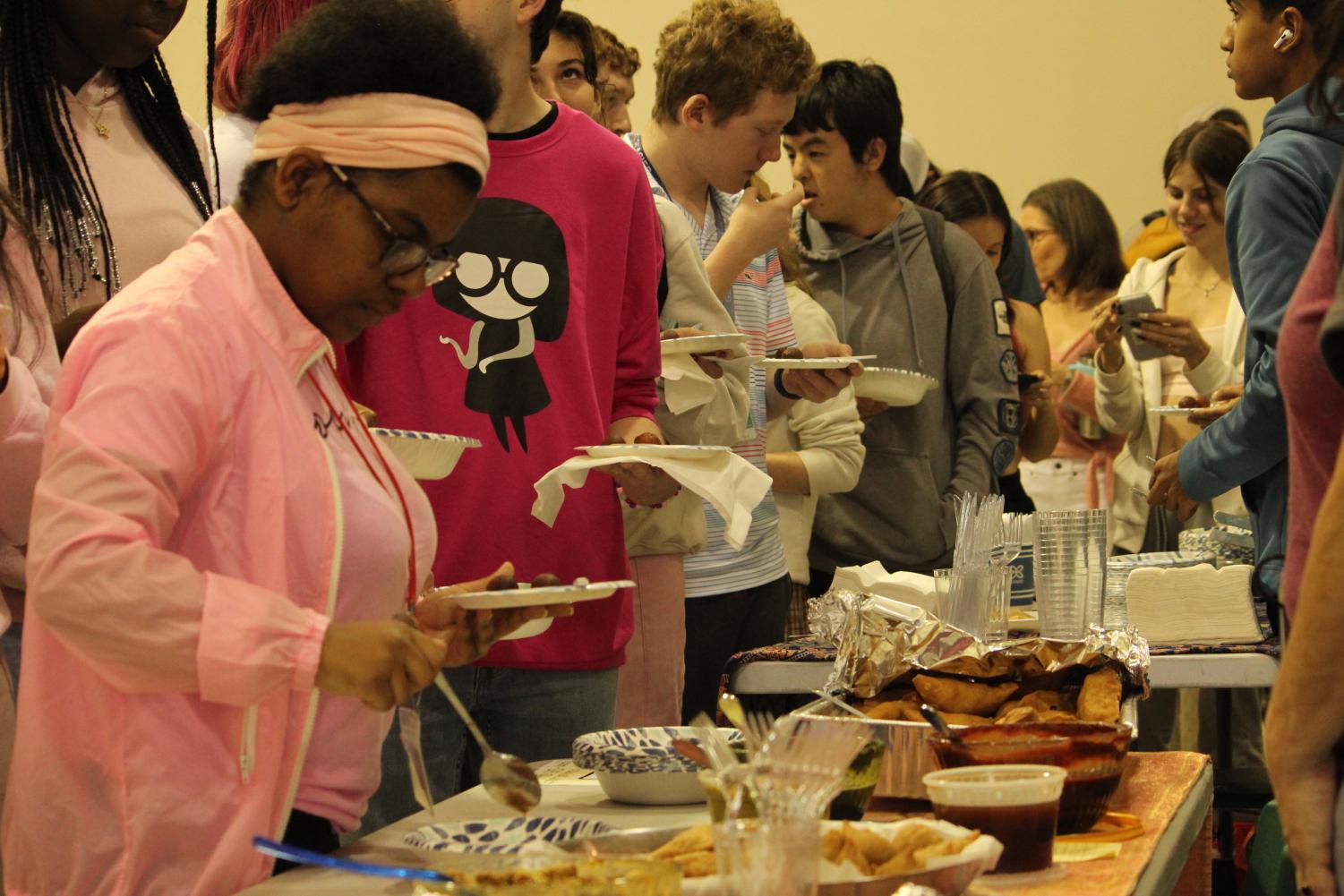
-
Freshman Maria Sevel paints henna, a temporary tattoo. “Henna is traditionally used to decorate our hands and feet, especially during special occasions and celebrations like weddings,” SASU vice president freshman Meher Parsinni said.
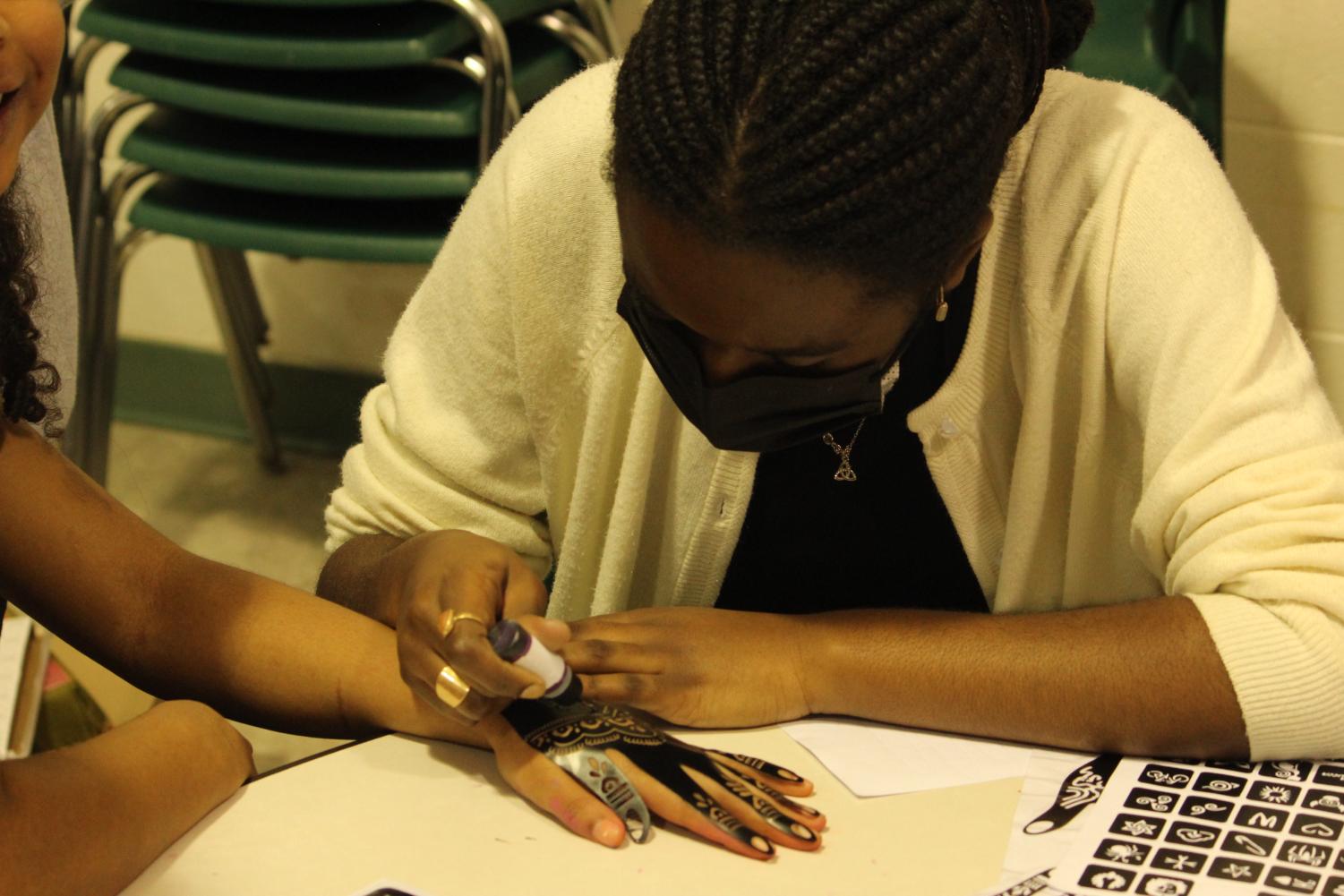
-
Students enjoy the diverse flavors of Indian food. “People are here from all different cultures, and that community and inclusivity are really beautiful. I’ve never seen something like this at WJ, and I hope to see it more in the school,” senior Diane Juica said.
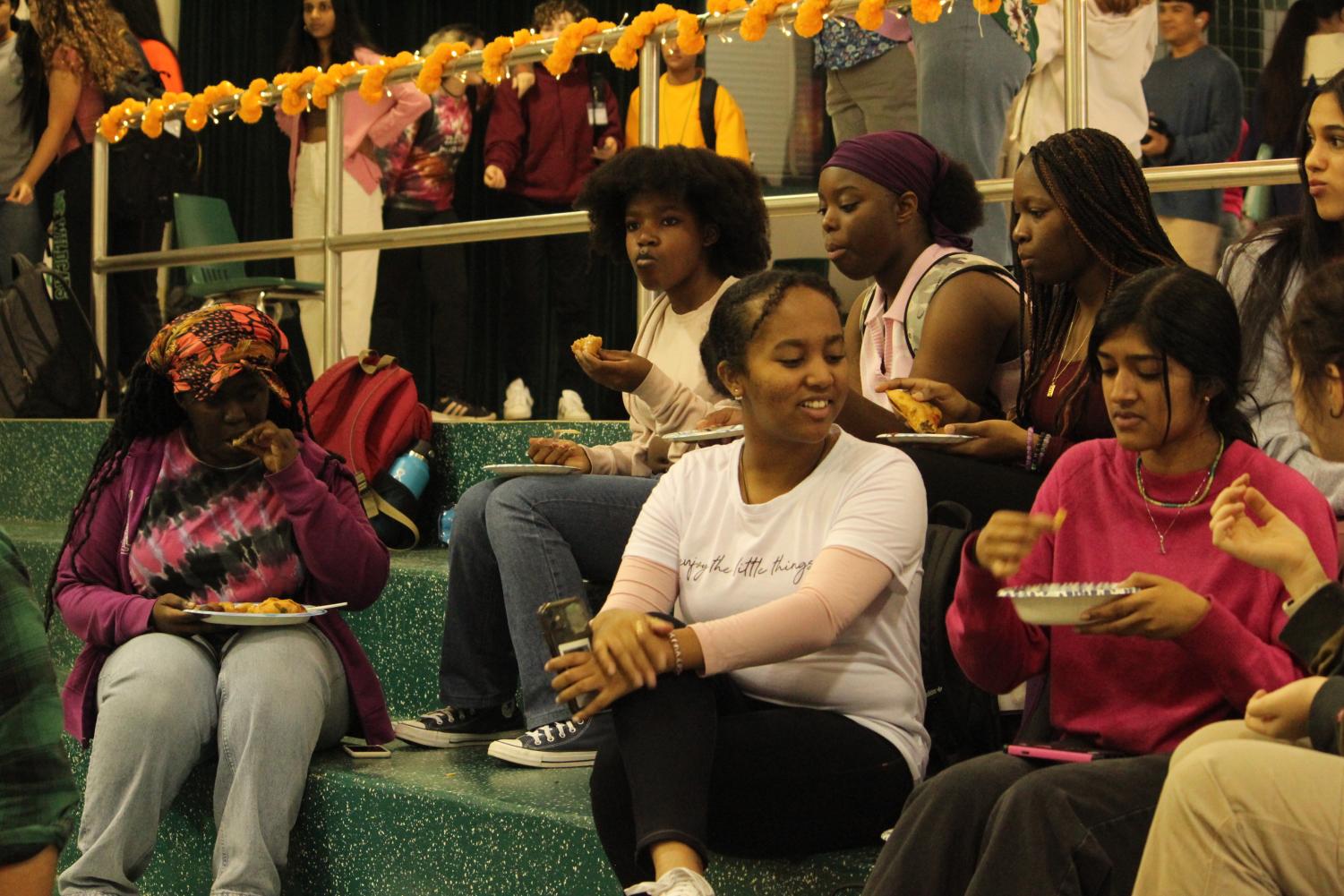
-
Junior Rheem Tungcod molds the bottom of a diya, a clay oil lamp. “We really wanted to give people an authentic Indian experience,” SASU president and founder junior Vedant Patel said.
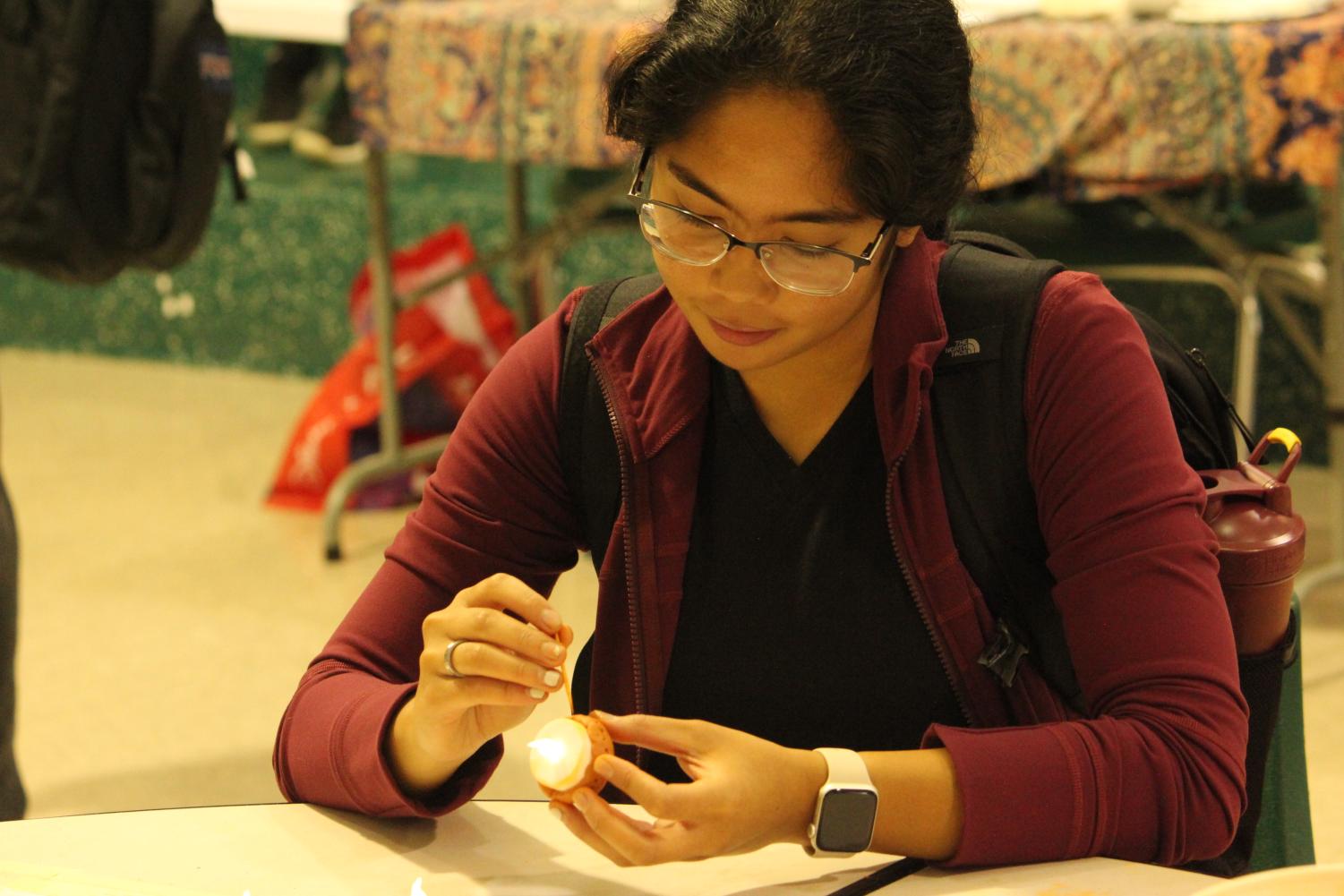
-
The officers and members of the South Asian Student Union, a club formed just a few weeks before the event, prepared a variety of traditional Diwali activities and decorations like posters and lights.
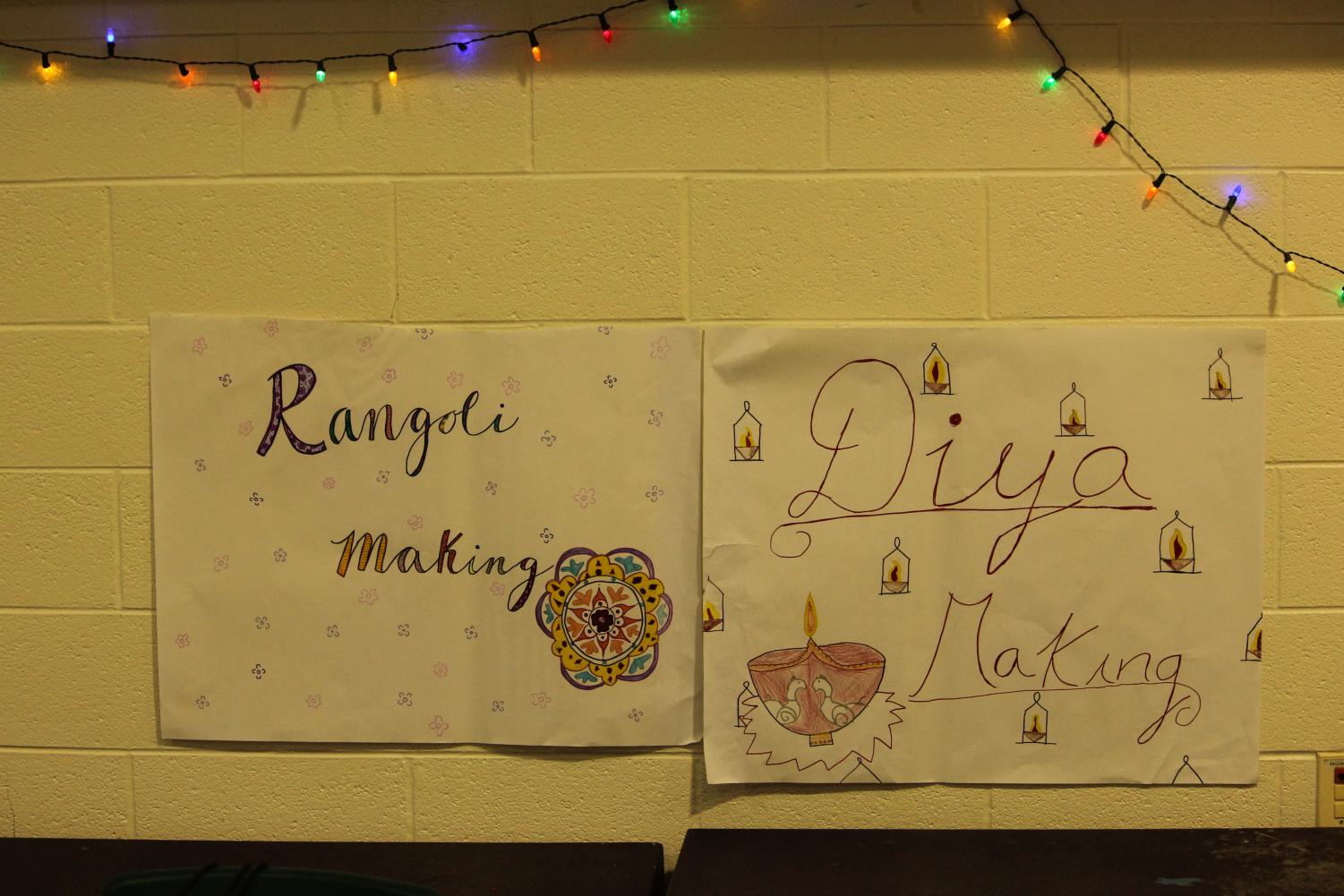
-
Diyas are important symbols in Diwali. “The diya light serves as light prevailing over darkness, which represents what Diwali is all about—light over darkness,” event coordinator junior Vedant Patel said.
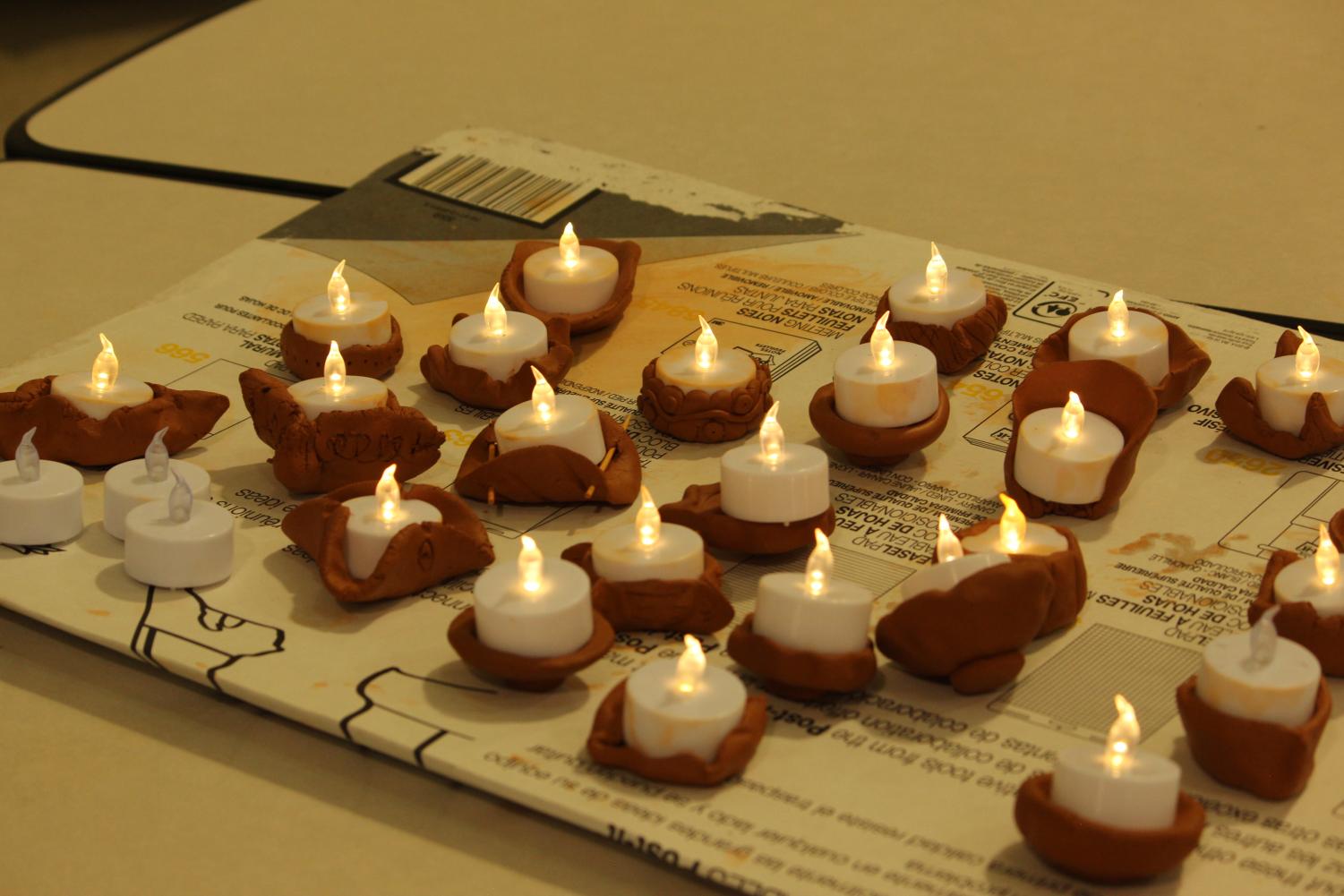
-
One of the activities offered at the celebration was rangoli-making, a Diwali tradition. Rangoli, a powder-based art, symbolizes the joy and vibrancy of a household and is believed to welcome Lakshmi, the goddess of wealth and good fortune.
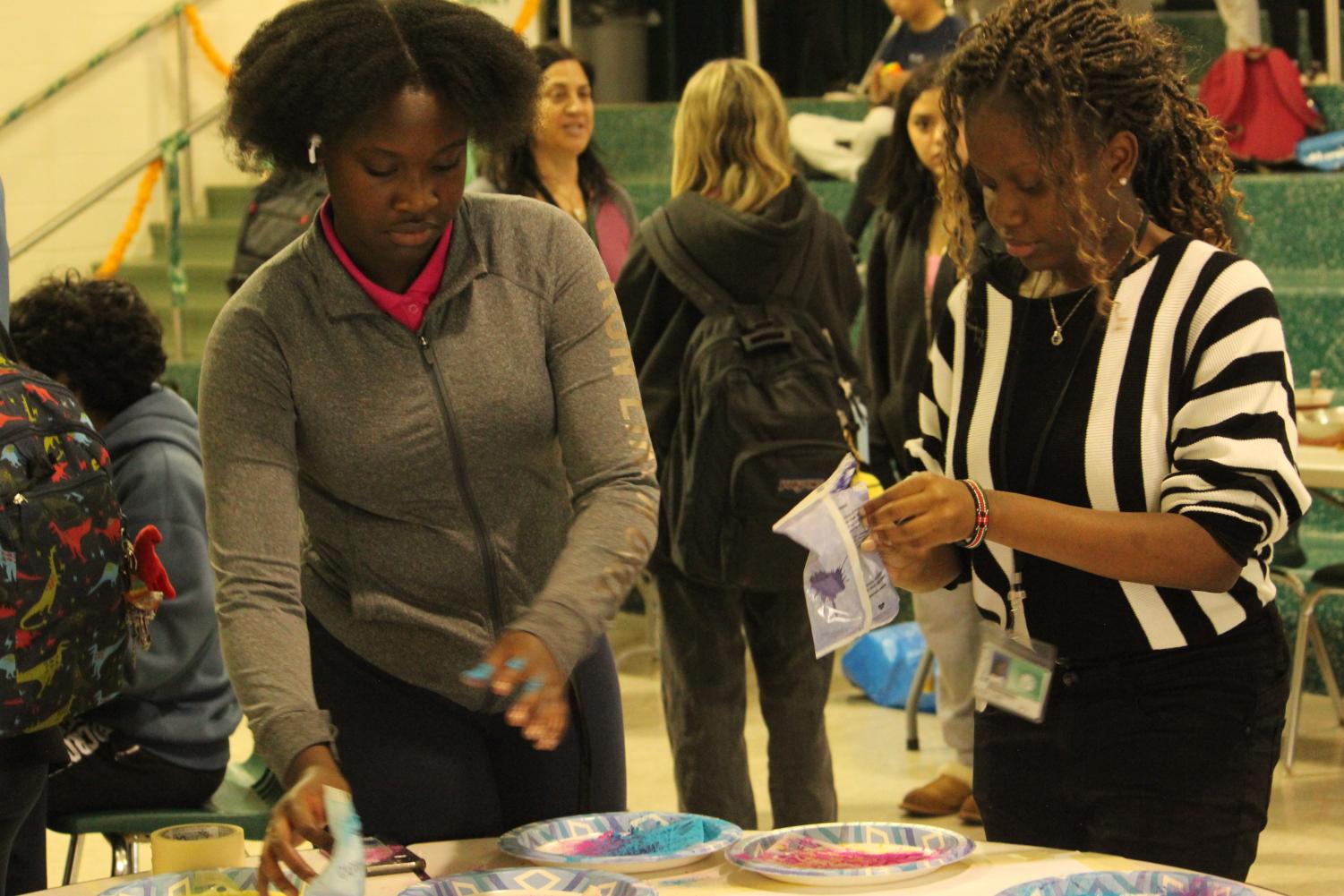
-
Students took photos of the displays of traditional Indian cloths. “The circular motion of different elements like elephants or warriors are spun on many Indian cloths. Every cloth in Indian culture is very intricate,” event coordinator Vedant Patel said.
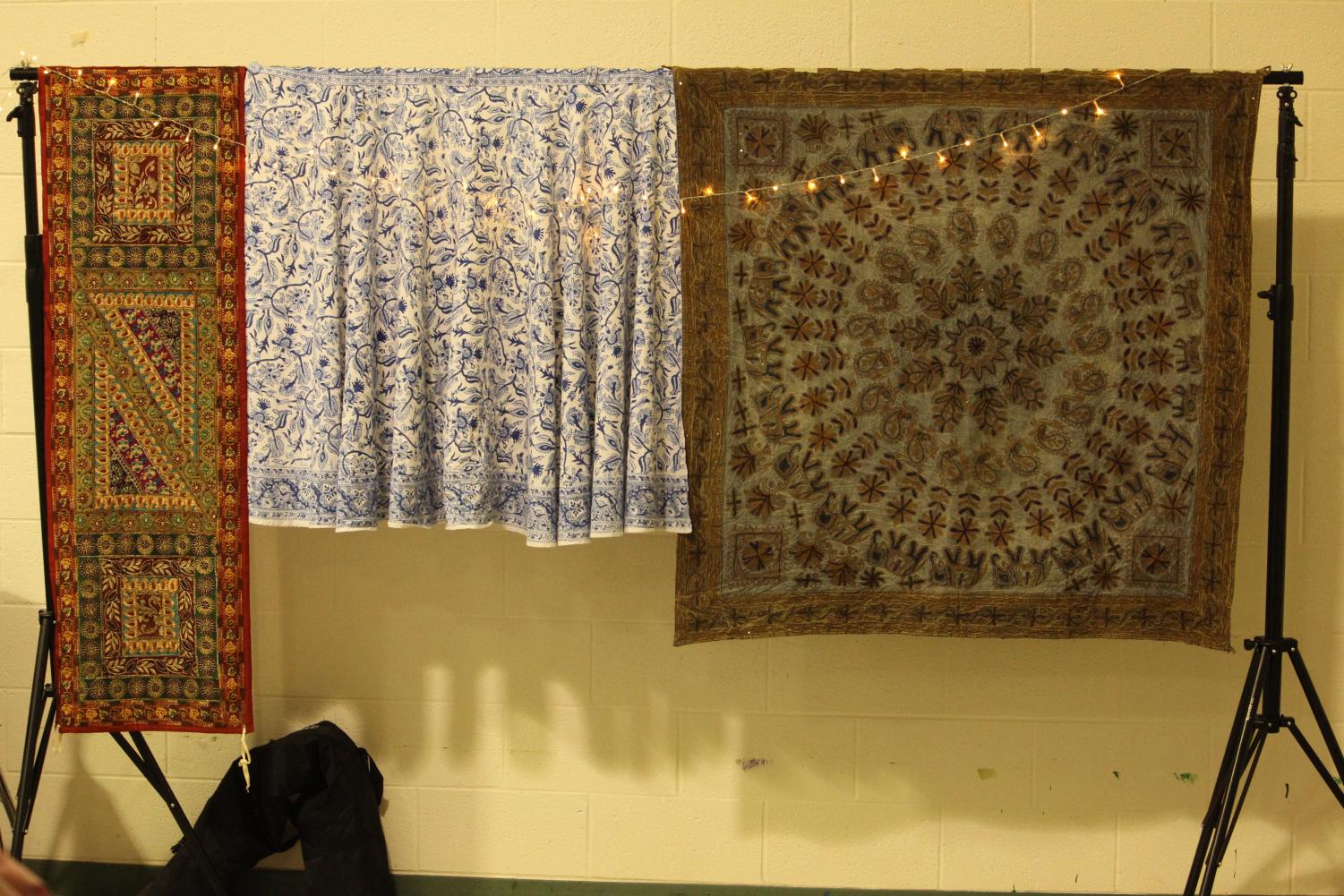
-
Junior Vedant Patel’s mother, Dr. Aparna Kotekar, helped cook and serve the food served at the celebration. “This is the first WJ event I’ve been to, and it feels really good seeing everyone come together,” Dr. Kotekar said.
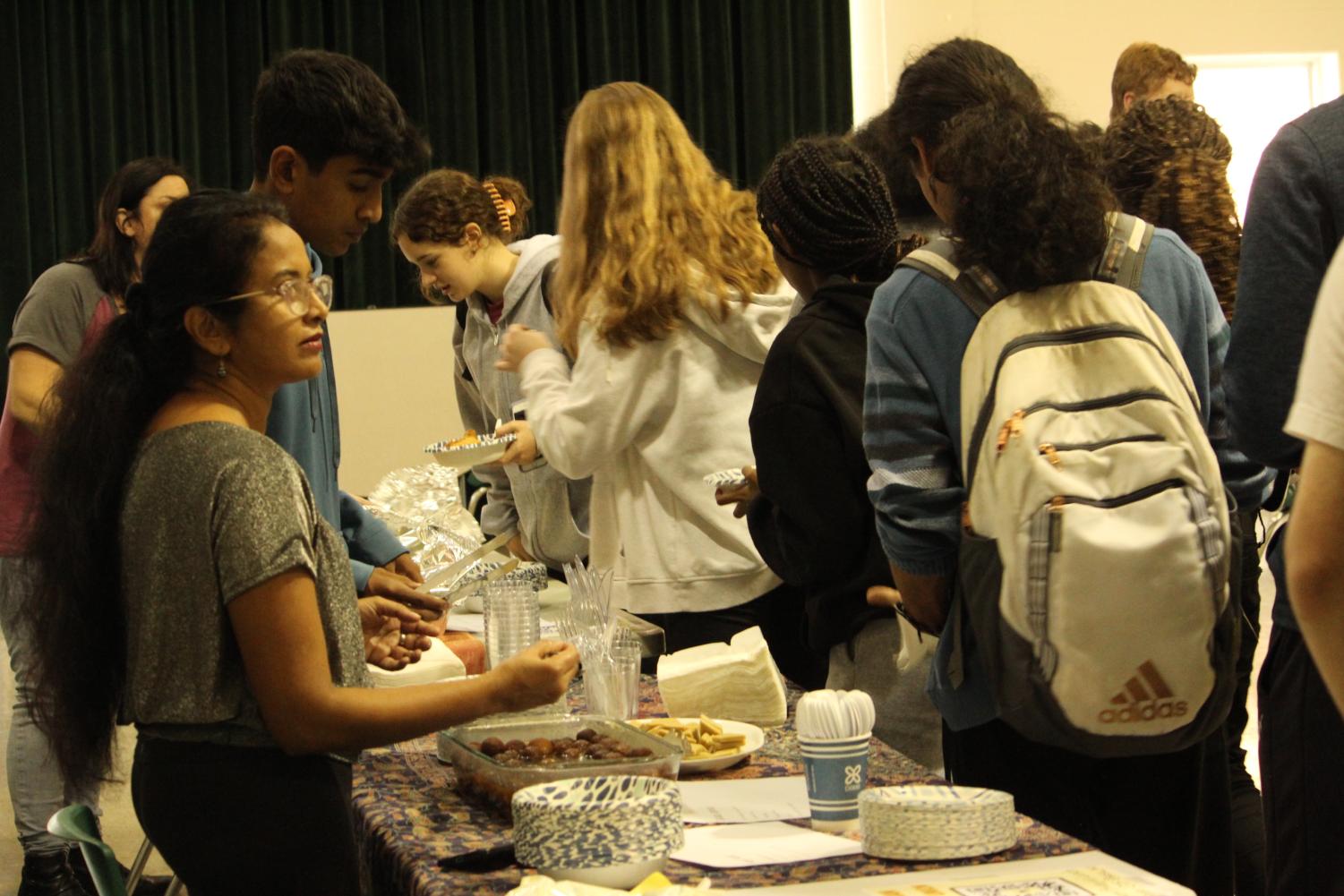
South Asian Student Union celebrates Diwali with the school community
Allison Xu
•
Oct 31, 2022
Story continues below advertisement
0
Donate to The Pitch
$556
$1000
Contributed
Our Goal
Your donation will support the student journalists of Walter Johnson High School. Your contribution will allow us to purchase equipment and cover our annual website hosting costs.
More to Discover
About the Contributor

Allison Xu, Online Editor-in-Chief
Senior Allison Xu is excited to serve as Online Editor-in-Chief for her third year on The Pitch. In her free time, she enjoys writing short stories, playing with her beagle, and spending time with family and friends.


